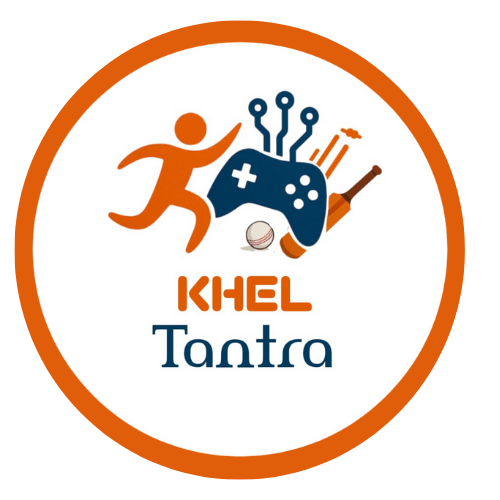React has held its place as one of the most popular JavaScript libraries for building user interfaces—and for good reason. It’s fast, scalable, backed by a huge community, and widely used in both startups and enterprise-level applications.
Whether you’re just stepping into frontend development or you’re already writing JavaScript and want to move into React, this roadmap is designed to walk you through the path—from fundamentals to full-stack React development.
Let’s dive into a practical, no-nonsense roadmap for becoming a React developer in 2025.
Step 1: Learn the Fundamentals of Web Development
Before you even touch React, you need to get comfortable with the building blocks of the web.
What to learn:
-
HTML: Semantic HTML, forms, tables, inputs, accessibility basics
-
CSS: Box model, Flexbox, Grid, positioning, responsive design
-
JavaScript (ES6+): Variables, functions, loops, conditionals, arrays, objects, arrow functions, template literals, destructuring, spread/rest, promises,
fetch, async/await, DOM manipulation
Tip: React won’t make sense unless you’re confident with JavaScript. Don’t rush this part.
Step 2: Understand How the Web Works
A strong React developer understands more than just components. Know the environment your code runs in.
-
HTTP/HTTPS
-
APIs & RESTful services
-
JSON
-
Browser DevTools
-
Basic understanding of how browsers render pages (DOM, CSSOM, event loop)
Step 3: Start Learning React (The Core Concepts)
Now you’re ready for React. Stick to the basics first and avoid third-party libraries or advanced tools initially.
Core React topics:
-
Components (functional and class, though focus is on functional)
-
JSX
-
Props and State
-
Handling Events
-
Conditional Rendering
-
Lists and Keys
-
useState and useEffect hooks
-
Basic forms and controlled components
Use Create React App to spin up your first app and start building small projects like a to-do list or weather app using public APIs.
Step 4: Routing and Navigation
Single Page Applications (SPAs) need routing to switch between different views.
-
Learn React Router (v6+)
-
Route configuration
-
Navigation
-
URL parameters
-
Nested routes
-
Redirects and Not Found (404) pages
Step 5: Styling in React
There are multiple ways to style in React. Learn a few and pick the one that suits your workflow.
Options include:
-
CSS Modules
-
Styled Components
-
Tailwind CSS (very popular in 2025)
-
Sass
-
Emotion
Start with plain CSS or Tailwind and avoid over-engineering early on.
Step 6: State Management
React’s local state is fine until your app grows. That’s where state management libraries come in.
-
Context API (good for small to medium apps)
-
Redux Toolkit (for larger apps)
-
Zustand, Jotai, or Recoil (modern, lightweight alternatives)
Focus on the “why” before jumping into Redux—don’t use it until you need global state.
Step 7: Forms and Validation
Real-world apps require robust form handling.
-
Controlled vs uncontrolled inputs
-
Form libraries: React Hook Form (highly recommended), Formik
-
Validation: Yup schema validation
-
Error messages and user-friendly UX
Step 8: Connect to APIs
Most apps aren’t useful without fetching data.
-
Fetching data with
fetch()oraxios -
Async/await best practices
-
Error handling
-
Loading states
-
Pagination, filtering, and search
-
React Query (TanStack Query) for advanced fetching and caching
Step 9: Build Projects
Nothing teaches like building. Apply what you’ve learned in real-world projects.
Project ideas:
-
Recipe search app using an external API
-
Movie database with React Router
-
E-commerce frontend with cart functionality
-
Blogging platform (can be extended to full-stack later)
-
Task management app with drag and drop (using libraries like
react-beautiful-dnd)
Step 10: Learn Testing
Testing gives you confidence that your app won’t break with every change.
-
Unit testing with Jest
-
Component testing with React Testing Library
-
Mocking APIs and user interactions
-
End-to-end testing with Cypress
Step 11: Performance Optimization
As your app grows, performance matters.
-
Code splitting (React.lazy, Suspense)
-
Memoization (
React.memo,useMemo,useCallback) -
Lazy loading images/components
-
Avoid unnecessary re-renders
Step 12: Go Full-Stack (Optional but Highly Valuable)
If you want to become a Full-Stack React Developer, consider learning:
-
Backend: Node.js, Express.js
-
Databases: MongoDB or PostgreSQL
-
Authentication: JWT, OAuth
-
Deployment: Vercel, Netlify, or Docker + cloud providers
Use frameworks like Next.js if you want to go deeper into server-side rendering, SEO, and API routes.
Final Words: Keep Evolving
React is evolving fast. In 2025, we’re seeing trends like:
-
Server Components
-
Signals (via libraries like Preact or Solid.js)
-
AI-enhanced development tools (e.g., GitHub Copilot)
But don’t let the noise distract you from the fundamentals. A developer who deeply understands JavaScript, React’s core concepts, and the browser will always stay relevant—no matter the trends.
React Developer Roadmap in a Nutshell (Checklist)
-
✅ HTML, CSS, JavaScript
-
✅ React Basics
-
✅ Routing
-
✅ Styling
-
✅ State Management
-
✅ Forms & Validation
-
✅ API Calls
-
✅ Projects
-
✅ Testing
-
✅ Optimization
-
✅ (Optional) Full-stack with Node.js
Join our community for latest update :- https://kheltantra.in/







